It looks like you're using an Ad Blocker.
Please white-list or disable AboveTopSecret.com in your ad-blocking tool.
Thank you.
Some features of ATS will be disabled while you continue to use an ad-blocker.
share:
originally posted by: skalla
a reply to: beansidhe
I'd have to agree with you Beansidhe. Prof Matthes University, who destroyed these items are in my eyes the prime example of an evil institution destroying evidence, an idea that I usually ridicule. As a knapper I can see the skill required to accentuate the natural shapes in the rocks, which would be made by applying inward pressure along the path that a fracture would develop, causing it to terminate earlier than it would otherwise and produce the effects seen. In other areas far more force is applied (and accurately too) than would normally happen, causing flakes to travel much further than in blade making, the "overshoot" mentioned in the quote. The Bird in particular took considerable skill - that beak is a real work of utter intent in my eyes.
ETA: the one below the bird is described as a bison in the source, and that's how I see it, but it's all in the eye of the beholder........
Out of interest, as a knapper and general artistic craftsperson, do you select your raw material with a specific project in mind, or do you find the raw material and let it suggest the outcome to you? I know that in some of the caves the artists seem to have composed around natural features in the rock to produce a more dynamic or living aspect to their subject. That makes sense in terms of cave and rock art, but portable art, like the 'bird', I wonder whether the stone initially inspired the shape, that is, that a bird was trying to get out and the artist attempts to free it or whether the artist specifically set out to portray a bird for a particular purpose.
originally posted by: KilgoreTrout
originally posted by: skalla
a reply to: beansidhe
I'd have to agree with you Beansidhe. Prof Matthes University, who destroyed these items are in my eyes the prime example of an evil institution destroying evidence, an idea that I usually ridicule. As a knapper I can see the skill required to accentuate the natural shapes in the rocks, which would be made by applying inward pressure along the path that a fracture would develop, causing it to terminate earlier than it would otherwise and produce the effects seen. In other areas far more force is applied (and accurately too) than would normally happen, causing flakes to travel much further than in blade making, the "overshoot" mentioned in the quote. The Bird in particular took considerable skill - that beak is a real work of utter intent in my eyes.
ETA: the one below the bird is described as a bison in the source, and that's how I see it, but it's all in the eye of the beholder........
Out of interest, as a knapper and general artistic craftsperson, do you select your raw material with a specific project in mind, or do you find the raw material and let it suggest the outcome to you? I know that in some of the caves the artists seem to have composed around natural features in the rock to produce a more dynamic or living aspect to their subject. That makes sense in terms of cave and rock art, but portable art, like the 'bird', I wonder whether the stone initially inspired the shape, that is, that a bird was trying to get out and the artist attempts to free it or whether the artist specifically set out to portray a bird for a particular purpose.
My thoughts exactly, did the rock initially suggest the shape?
a reply to: KilgoreTrout
Hiya, I only knap tools and blades and have never attempted representational artistic pieces, so I simply choose a piece of flint of suitable size due to the often fairly large amount of material that must be reduced to rubble as part of the knapping strategy - setting up the right shape for removal of further flakes to achieve the desired result.
The final "Pierre Figure", described as a mask is a good example to describe the knapping strategy (ie the order of removing material).
The eye on the piece's right is a step fracture (a fracture terminated too early via pressure over the area the fracture would normally travel, or due to inconsistencies in the material or it's surface having an uneven face; that would be a chronic mistake in blade making) and looking at it, there is no way it could be produced as one of the final blows as no "platform" or point of purchase would allow for it's removal - be that accidental, due to environmental damage or intentional knapping. It would be a very early removal in the process and then after this the curvature of the surrounding cheek area would need to be shaped by removal of large flakes and quite a lot of material.
When working with wood it's very different as I can just carve away and the way that I personally work with wood is to think about the features of the material and then work with those accordingly.
Hiya, I only knap tools and blades and have never attempted representational artistic pieces, so I simply choose a piece of flint of suitable size due to the often fairly large amount of material that must be reduced to rubble as part of the knapping strategy - setting up the right shape for removal of further flakes to achieve the desired result.
The final "Pierre Figure", described as a mask is a good example to describe the knapping strategy (ie the order of removing material).
The eye on the piece's right is a step fracture (a fracture terminated too early via pressure over the area the fracture would normally travel, or due to inconsistencies in the material or it's surface having an uneven face; that would be a chronic mistake in blade making) and looking at it, there is no way it could be produced as one of the final blows as no "platform" or point of purchase would allow for it's removal - be that accidental, due to environmental damage or intentional knapping. It would be a very early removal in the process and then after this the curvature of the surrounding cheek area would need to be shaped by removal of large flakes and quite a lot of material.
When working with wood it's very different as I can just carve away and the way that I personally work with wood is to think about the features of the material and then work with those accordingly.
a reply to: skalla
A lot of early art is thought to be pictorial language, often showing an event, such as a great hunt or a ritual, as well as being functional, for example as fertility rites. The 'goddess' and 'erect male' figures are specific examples of art being practical in use as fertility symbols.
The ancient Egyptian, Roman and Greek art is known for the continuation of such 'fertility symbol' art but often hidden when discovered and now not known by many.
A lot of early art is thought to be pictorial language, often showing an event, such as a great hunt or a ritual, as well as being functional, for example as fertility rites. The 'goddess' and 'erect male' figures are specific examples of art being practical in use as fertility symbols.
The ancient Egyptian, Roman and Greek art is known for the continuation of such 'fertility symbol' art but often hidden when discovered and now not known by many.
originally posted by: theabsolutetruth
a reply to: skalla
A lot of early art is thought to be pictorial language, often showing an event, such as a great hunt or a ritual, as well as being functional, for example as fertility rites. The 'goddess' and 'erect male' figures are specific examples of art being practical in use as fertility symbols.
The ancient Egyptian, Roman and Greek art is known for the continuation of such 'fertility symbol' art but often hidden when discovered and now not known by many.
So, censorship played a role, wouldn't you say?
First is the Vero beach mammoth carving
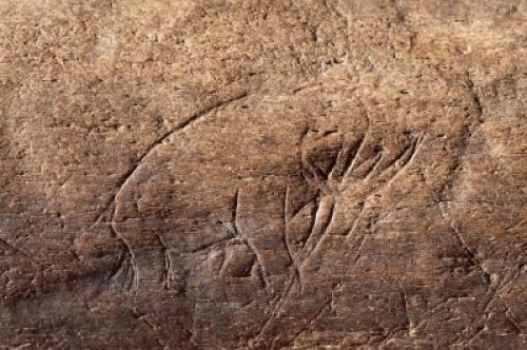
www.sciencedaily.com...
This is the barzena carving, it may be as old as 40k, and is made from a camel bone. It was found very near the highly controversial Valsequillo.
It is an example the artist having to fit the art to material shape.
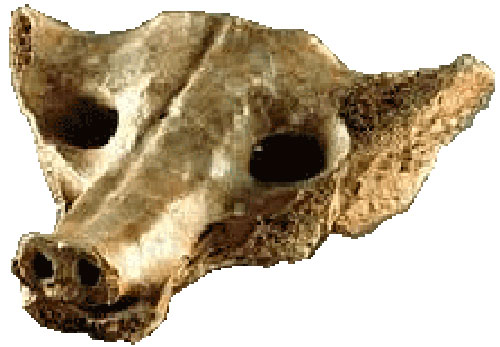
www.jstor.org...
Then there are the oldest petroglyphs in NA.
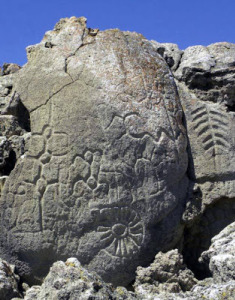
westerndigs.org...
Then there is the Mayan Datat or the hairy man.
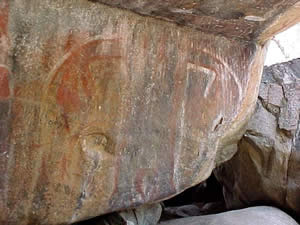

It's a 1300 year old image of Yayali, or Sasquatch

Researchers from the Smithsonian Institution and the University of Florida have announced the discovery of a bone fragment, approximately 13,000 years old, in Florida with an incised image of a mammoth or mastodon. This engraving is the oldest and only known example of Ice Age art to depict a proboscidean (the order of animals with trunks) in the Americas. The team's research is published online in the Journal of Archaeological Science.
The bone was discovered in Vero Beach, Fla. by James Kennedy, an avocational fossil hunter, who collected the bone and later while cleaning the bone, discovered the engraving. Recognizing its potential importance, Kennedy contacted scientists at the University of Florida and the Smithsonian's Museum Conservation Institute and National Museum of Natural History.
"This is an incredibly exciting discovery," said Dennis Stanford, anthropologist at the Smithsonian's National Museum of Natural History and co-author of this research. "There are hundreds of depictions of proboscideans on cave walls and carved into bones in Europe, but none from America -- until now."
The engraving is 3 inches long from the top of the head to the tip of the tail, and 1.75 inches tall from the top of the head to the bottom of the right foreleg. The fossil bone is a fragment from a long bone of a large mammal -- most likely either a mammoth or mastodon, or less likely a giant sloth. A precise identification was not possible because of the bone's fragmented condition and lack of diagnostic features.
www.sciencedaily.com...
This is the barzena carving, it may be as old as 40k, and is made from a camel bone. It was found very near the highly controversial Valsequillo.
It is an example the artist having to fit the art to material shape.

www.jstor.org...
Then there are the oldest petroglyphs in NA.
Inscrutable symbols etched on a limestone boulder in western Nevada — herringbone patterns, series of pits, and chain-like links — are the oldest known petroglyphs in North America, scientists say. And they may be the oldest evidence of humanity on the continent.
The rock art, perched along the shore of now-dry Lake Winnemucca some 55 kilometers northeast of Reno, had been discovered decades ago. But a new study, published in the Journal of Archaeological Science, reports that tests of residues found both on top of and underneath the glyphs dates them to at least 10,500 years ago — and perhaps has much as 14,800 years ago.
The research, led by L.V. Benson of the U.S. Geological Survey and Boulder’s Natural History Museum, analyzed the artwork’s thin but telltale film of carbonate — a compound that precipitates, or forms as a solid, when water and carbon dioxide react with the calcium carbonate in limestone.
Where carbonate has formed, the limestone rocks must have been under water.
Radiocarbon dating of the lower layer of carbonate, under the carvings, showed that it formed about 14,800 years ago. The layer above them, meanwhile, dated to 10,500 years ago.

westerndigs.org...
Then there is the Mayan Datat or the hairy man.


It's a 1300 year old image of Yayali, or Sasquatch
The Tule River Indian Reservation was established in 1873 on 54,116 acres. The reservation lands are heavily timbered and include several Giant Sequoia Groves. The reservation is surrounded by thousands of acres of national forest system lands. It is rare for an Indian tribe to own a site they believe they were created at, and records seem to imply that the location of the reservation was chosen to incorporate Painted Rock for that reason.
Painted Rock is first described by Mallery in 1889. Mallery (1889) stated that the paintings were "famous and well-known in the area." He described the paintings as created by being pecked, painted, and then pecked again to ensure a "long lasting effect." Mallery also described the Coyote Eating the Moon, and a large bear-like creature covering one wall. He stated that the locals called the creature, "Hairy Man." Steward noted the paintings in 1929, and stated that a Tribal elder, living at the location in 1900, had identified the large painting as the "Hairy Man."
Latta (1949) detailed the site by stating: "The Indians readily recognize the characters which represent animals, but they offer no other explanation for the geometrical designs and line drawings than to give the Indian name for circle, triangle, square or other common figures. They do identify drawings of. . . a few mythological characters" such as Hairy Man and the Coyote Eating the Moon.
No explanation of what the Yokuts or researchers thought "Hairy Man" was is provided in these early references. Everyone seemed to understand that "Hairy Man" meant just that, "Hairy Man." This is in direct contrast with the Coyote Eating the Moon. A great deal of effort by researchers was spent on trying to identify the reason Coyote was Eating the Moon, and what humans did to deserve such a fate. Latta (1936) stated that he thought Hairy Man was maybe related to the "Giant of Ah-wah-Nee" stories, but that idea was not accepted.
Finally, in 1973, Hairy Man was associated with the "white" term of "Big Foot" and since then, it has been accepted that Hairy Man and Bigfoot are and have always been the same creature. Johnstone (1975) noted that Hairy Man had always been described by the Yokuts as "a creature that was like a great big giant with long, shaggy hair" and since Bigfoot also meets that description, the two are the same.
Traditional Stories
Gayton (1976:89) was one of the main ethnographers of the Yokuts. She studied their traditional stories and came to the following conclusion:
The prehuman era was that of a world created and occupied by birds and animals of superanimal and superhuman powers. To Eagle, with his bird and animal assistants and companions, was attributed the building of the world, the institution of certain cultural, social, and physical features of man and his way of life. This prehistoric period, described in a fairly full but not elaborately detailed stock of stories, came to an end with the creation of mankind by Eagle and the subsequent transformation of these bird-and-animal people into their present known forms. All this happened beyond the memory of man, but the past continued into the present in the immediate ubiquity of the animals themselves. Beliefs about them were being constantly reinforced by daily happenings in the circumjacent wilds.
Simplified, this means that when the Yokuts observed animal behavior in the wild, they incorporated those observations into their traditional stories. The more they observed, the most elaborate the stories and details. Following are several examples of traditional stories, collected by the author unless otherwise noted, and the observed animal behavior represented in the story.
a reply to: InTheLight
Censorship from 'modern' archaeologists is known because they considered it 'indecent' and also there might be other censorship of those of an agenda, such as those promoting their agenda, for example various Ancient Egyptian pharaohs destroyed the previous beliefs for promoting their own, similarly many other religions, Christianity destroying 'pagan' art for example and those of conquering cultures destroying the art of the conquered.
As for those ancients that created art and their cultures, censorship of sorts was perhaps also part of the story as many were superstitious and there would be boundaries as to the representations being made for the purpose of inviting or invoking whichever particular response / natural element/ fertility 'god /goddess etc. was required.
Each culture would have their own boundaries and traditions.
Censorship from 'modern' archaeologists is known because they considered it 'indecent' and also there might be other censorship of those of an agenda, such as those promoting their agenda, for example various Ancient Egyptian pharaohs destroyed the previous beliefs for promoting their own, similarly many other religions, Christianity destroying 'pagan' art for example and those of conquering cultures destroying the art of the conquered.
As for those ancients that created art and their cultures, censorship of sorts was perhaps also part of the story as many were superstitious and there would be boundaries as to the representations being made for the purpose of inviting or invoking whichever particular response / natural element/ fertility 'god /goddess etc. was required.
Each culture would have their own boundaries and traditions.
edit on 26-8-2014 by theabsolutetruth because: (no reason given)
This was one I only learned about while looking for examples of ancient art for this thread - it's been a learning process for me which I've
thoroughly enjoyed.
La Marche Cave's Etchings of People
Another French cave, though the focus is not on the controversial cave paintings which are of questionable authenticity, but 15,000 year old etchings on over 1500 limestone slabs that were all over the floor, depicting clothed humans, as well as animals.
The site was discovered in 1937 and it has been speculated that other caves may have had similar etched slabs on the floors that were completely ignored and subsequently and unwittingly destroyed by the feet of their discoverers and researchers.
A horse, possibly bridled:
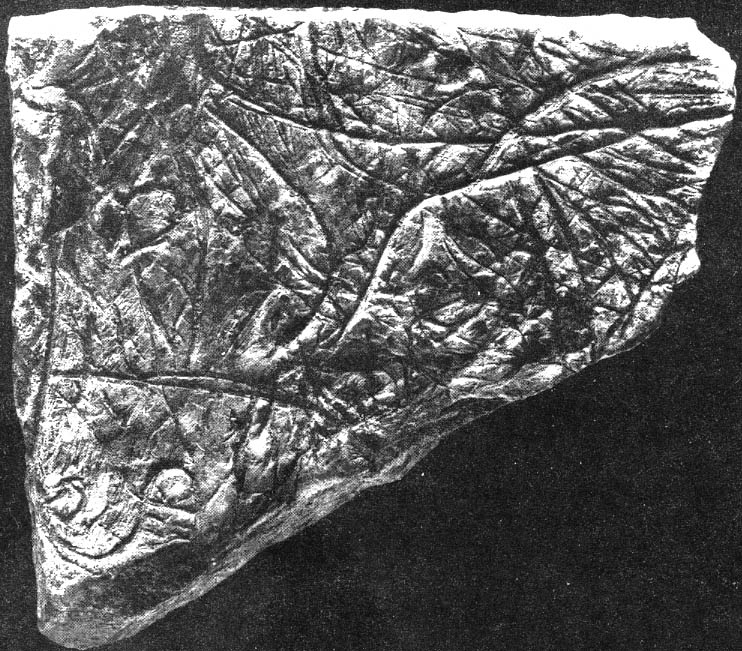
An erotic scene?

A seated Lady:
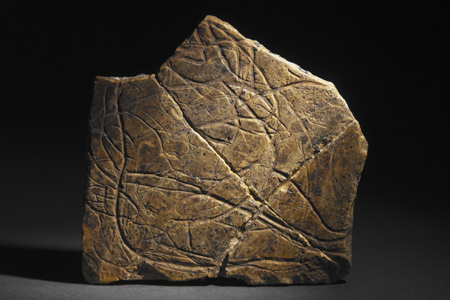
Many others I could only find in sketch form, and not photographs of the original slabs. Perhaps with more time I could find photos, but it's late and while i'm tired I was keen to add this amazing site, maybe I can find some in the next day or two. Perhaps a reader has better Net-Fu than I and will lend a hand?
A clothed person, complete with hat and boots:
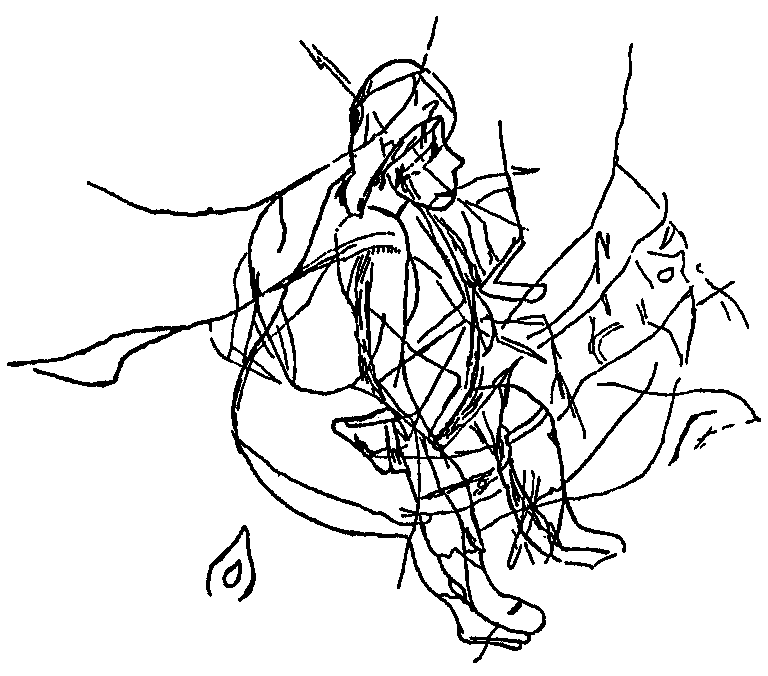
and more depictions of people.....
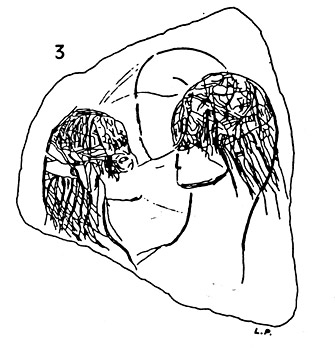

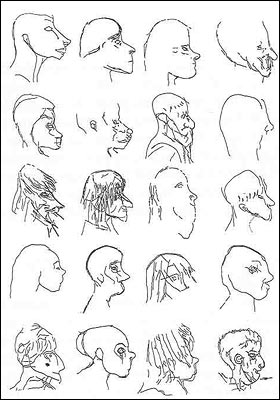
Source
There was some controversy over this discovery when found, see the Wikipedia link in the title, but they are now regarded as entirely authentic from what I can tell. I'm shocked that this site is not better known.
ETA: BBC article on La Marche
La Marche Cave's Etchings of People
Another French cave, though the focus is not on the controversial cave paintings which are of questionable authenticity, but 15,000 year old etchings on over 1500 limestone slabs that were all over the floor, depicting clothed humans, as well as animals.
The site was discovered in 1937 and it has been speculated that other caves may have had similar etched slabs on the floors that were completely ignored and subsequently and unwittingly destroyed by the feet of their discoverers and researchers.
A horse, possibly bridled:

An erotic scene?

A seated Lady:

Many others I could only find in sketch form, and not photographs of the original slabs. Perhaps with more time I could find photos, but it's late and while i'm tired I was keen to add this amazing site, maybe I can find some in the next day or two. Perhaps a reader has better Net-Fu than I and will lend a hand?
A clothed person, complete with hat and boots:

and more depictions of people.....



Péricard originally found 69 human figurines in the caves. There were 49 etchings of heads alone and 18 with the whole body. All together, there were 50 etchings of females, 12 of males and 5 that were of indeterminate gender. Eventually, 155 human figurines were found
Certain findings at La Marche have led to greater debate over the origin and development of writing systems. In particular, an engraved reindeer antler from La Marche has provided proof that more sophisticated systems of symbols existed during the Paleolithic period than once believed. Francesco d’Errico, an archaeologist who analyzed the antler, sees it as proof that humans at this time had “artificial memory systems,” which enabled them to record various groupings of information
Additionally, Dr. Michael Rappenglueck has noted pits arranged like certain constellations on the cave floor. One constellation on La Marche’s floor, the Pleiades, has been found engraved on the walls of Neolithic caves, but rarely on those of the Palaeolithic. Dr. Rappenglueck has suggested that these pits might have been filled with animal fat and set on fire to replicate the stars in the sky. If so, Rappenglueck ventures, this site could mark the origin of the candlelit festivals in the Far East that also celebrate the Pleiades.
Source
There was some controversy over this discovery when found, see the Wikipedia link in the title, but they are now regarded as entirely authentic from what I can tell. I'm shocked that this site is not better known.
ETA: BBC article on La Marche
edit on 26-8-2014 by skalla because: (no reason
given)
originally posted by: skalla
There was some controversy over this discovery when found, see the Wikipedia link in the title, but they are now regarded as entirely authentic from what I can tell. I'm shocked that this site is not better known.
Those are actually some of my favourites, there is a really striving to capture humans in the same detail and with motion that was previously only applied to animal subjects...here is an expanded picture of the one above giving the full context...
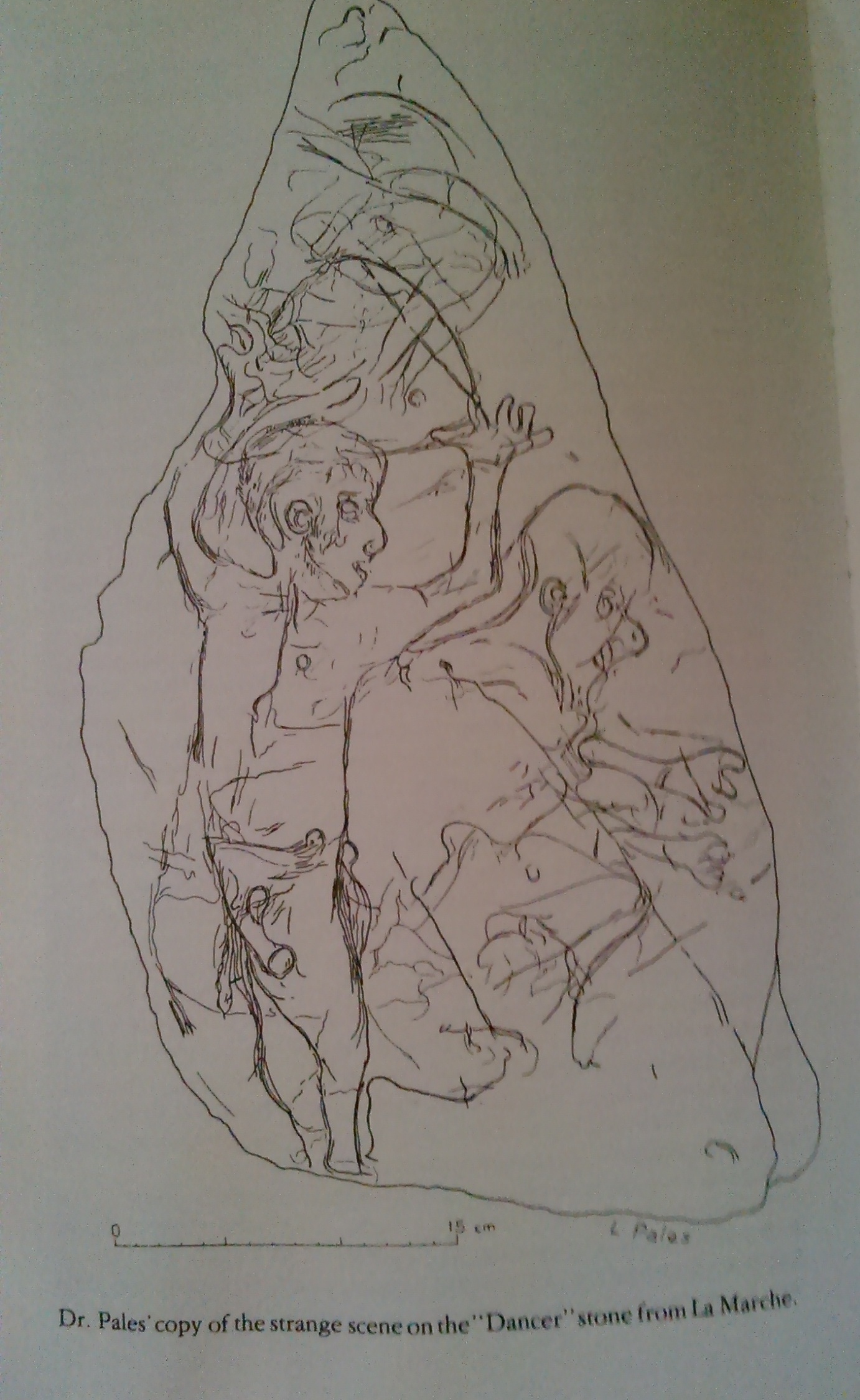
Excuse the quality, I used my phone to take the picture from a book...Secrets of the Ice Age by Evan Hadingham.
a reply to: InTheLight
With the development of agriculture and urbanisation we can often interpret religion as being increasingly administered by a specialised caste who act as conduit to the divine, and subsequently being hidden and used in power plays.
ETA: i'm off to bed shortly, many thanks for the interest and further excellent responses, i'll read a little more but save responses until later tomorrow to do justice to contributions
With the development of agriculture and urbanisation we can often interpret religion as being increasingly administered by a specialised caste who act as conduit to the divine, and subsequently being hidden and used in power plays.
edit on 26-8-2014 by skalla because: clarity
ETA: i'm off to bed shortly, many thanks for the interest and further excellent responses, i'll read a little more but save responses until later tomorrow to do justice to contributions
edit on 26-8-2014 by skalla because: (no reason given)
a reply to: skalla
This is another one I like a lot for the same reason as above, it has a documentary feel to it...

Just noticed that the frame cuts off the full description, it is Monte Pellegrino. Apologies for that.
This is another one I like a lot for the same reason as above, it has a documentary feel to it...

Just noticed that the frame cuts off the full description, it is Monte Pellegrino. Apologies for that.
edit on 26-8-2014 by KilgoreTrout because: (no reason given)
a reply to: skalla
An impossible jump
A superior artist, as from one day to the next, gave us evidence that human consciousness came out of nothing. As if 500 million years, where laws of evolution ruled every step, suddenly were of no value anymore.
The name of the artist? Cro Magnon. A name that refers to a Dordogne cave, located in the southwest of France. In Lascaux (Dordogne) in 1940 a 18 year old boy discovered paintings that were 15.000 years old and those paintings were breathtaking. And because between 15.000 and 30.000 years ago archeologists found pictures that were of a far less quality, they concluded that there must have been a gradual learning process. All in all a very fast and doubtful conclusion. Because in 1994 speleologists discovered Chauvet cave (Ardèche) –also south of France-. The paintings were 32.000 years old and they were far more beautiful than those in Lascaux.
How was this possible?
The oldest paintings were more beautiful and seemed to come out of nothing. Nobody ever seemed to have exercised to become such a skilled artist.
We don’t believe that the use of rocks and sticks by the artist predecessor (art older than Chauvet) was a form of intelligence that even reached the ankles of the indescribable superiority of the Chauvet artist. Besides, the so-called tools of his predecessors are manufactured and used today in a similar way by certain species of apes. Even with a great deal of goodwill we cannot believe that some scratches and pits in rock -long before Chauvet- are conscious art. Some of this so called art is no more than that what we see in it now. Scratches and pits form a sort of elephant or whatever (in our imagination today). A pure subjective interpretation of some people today. And some scratches and pits may be rather the work of what one might call 'a smart monkey', but no more than that.
you can read further on
www.evawaseerst.be...
An impossible jump
A superior artist, as from one day to the next, gave us evidence that human consciousness came out of nothing. As if 500 million years, where laws of evolution ruled every step, suddenly were of no value anymore.
The name of the artist? Cro Magnon. A name that refers to a Dordogne cave, located in the southwest of France. In Lascaux (Dordogne) in 1940 a 18 year old boy discovered paintings that were 15.000 years old and those paintings were breathtaking. And because between 15.000 and 30.000 years ago archeologists found pictures that were of a far less quality, they concluded that there must have been a gradual learning process. All in all a very fast and doubtful conclusion. Because in 1994 speleologists discovered Chauvet cave (Ardèche) –also south of France-. The paintings were 32.000 years old and they were far more beautiful than those in Lascaux.
How was this possible?
The oldest paintings were more beautiful and seemed to come out of nothing. Nobody ever seemed to have exercised to become such a skilled artist.
We don’t believe that the use of rocks and sticks by the artist predecessor (art older than Chauvet) was a form of intelligence that even reached the ankles of the indescribable superiority of the Chauvet artist. Besides, the so-called tools of his predecessors are manufactured and used today in a similar way by certain species of apes. Even with a great deal of goodwill we cannot believe that some scratches and pits in rock -long before Chauvet- are conscious art. Some of this so called art is no more than that what we see in it now. Scratches and pits form a sort of elephant or whatever (in our imagination today). A pure subjective interpretation of some people today. And some scratches and pits may be rather the work of what one might call 'a smart monkey', but no more than that.
you can read further on
www.evawaseerst.be...
a reply to: skalla
Thanks for this beautiful thread! (And, incidentally, I believe you get my very first star )
Like a couple others said, I've always loved the Lionman statue. Also, I don't have a post to add on this yet, but I believe there are some very old (~40,000 years b.p.) musical instrument fragments from Europe (assuming it falls under the topic at hand?). The one I'm remember right now was flute-like and carved from an animal tusk/bone. The object itself wouldn't be a 'work of art,' per se, but obviously it's indicative of 'art's' existence in the period.
I'll try to edit in something specific soon.
One other thing I thought while reading this thread: The examples we have today of prehistoric artwork tends to be in extremely remote and forbidding places, but some of that must be because something needs to be helluva out of the way in order to survive unmolested for so long. I would never doubt that (e.g.) a cave's seclusion could contribute to its mystical allure, but it stands to reason that many much-more-accessible works of art existed, but didn't survive the tests of time. I wonder if there are surveys into the 'general prevalence' of artwork as a whole throughout these times??....
Thanks for this beautiful thread! (And, incidentally, I believe you get my very first star )
Like a couple others said, I've always loved the Lionman statue. Also, I don't have a post to add on this yet, but I believe there are some very old (~40,000 years b.p.) musical instrument fragments from Europe (assuming it falls under the topic at hand?). The one I'm remember right now was flute-like and carved from an animal tusk/bone. The object itself wouldn't be a 'work of art,' per se, but obviously it's indicative of 'art's' existence in the period.
I'll try to edit in something specific soon.
One other thing I thought while reading this thread: The examples we have today of prehistoric artwork tends to be in extremely remote and forbidding places, but some of that must be because something needs to be helluva out of the way in order to survive unmolested for so long. I would never doubt that (e.g.) a cave's seclusion could contribute to its mystical allure, but it stands to reason that many much-more-accessible works of art existed, but didn't survive the tests of time. I wonder if there are surveys into the 'general prevalence' of artwork as a whole throughout these times??....
a reply to: eloheim
You mean this one here?
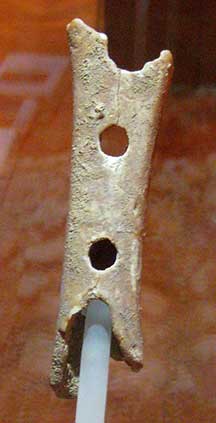
The bone fragment

Artists expression of what i might've looked like when it was used
Apparently it's 55.000 years old and was used to play melodies in the do-re-mi scale. Would love to have heard someone play a reconstruction.
You mean this one here?

The bone fragment

Artists expression of what i might've looked like when it was used
Apparently it's 55.000 years old and was used to play melodies in the do-re-mi scale. Would love to have heard someone play a reconstruction.
edit on 1-9-2014 by Utnapisjtim because: fixed
a reply to: Utnapisjtim
Yes! Thank for very much. You beat me to it (pun maybe?)
I also saw this in the news today: Perhaps the best evidence yet for Neanderthal artistry (although the evidence seems to be steadily accumulating that they were very similar to modern humans in mental capacity and behavior, IMHO). Dated at around 40,000 years.
Study claims cave art made by Neanderthals
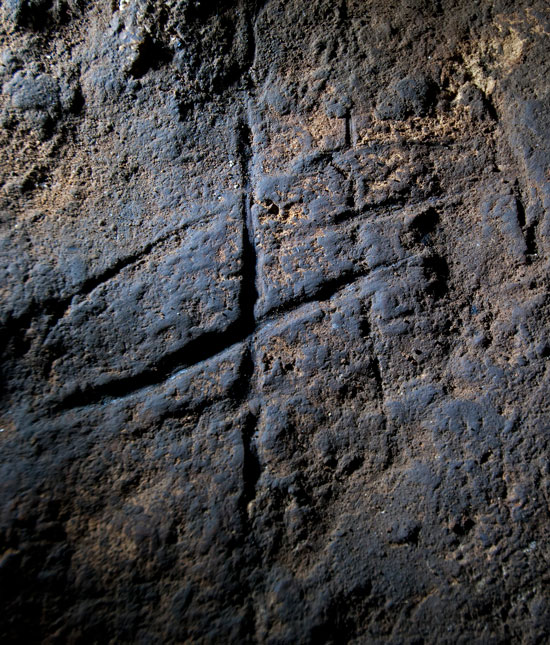
There are many other news reports about the findings if you search google.
Yes! Thank for very much. You beat me to it (pun maybe?)
I also saw this in the news today: Perhaps the best evidence yet for Neanderthal artistry (although the evidence seems to be steadily accumulating that they were very similar to modern humans in mental capacity and behavior, IMHO). Dated at around 40,000 years.
Study claims cave art made by Neanderthals

There are many other news reports about the findings if you search google.
originally posted by: eloheim
I also saw this in the news today: Perhaps the best evidence yet for Neanderthal artistry (although the evidence seems to be steadily accumulating that they were very similar to modern humans in mental capacity and behavior, IMHO). Dated at around 40,000 years.
I am not sure at what point it was decided that the Neaderthals lacked imagination and creativity. I suspect that it was based on as little proof as the heavy brow ridges of the first skulls discovered combined with a rich white boys club mentality. Since then we have found proof that they cared for the sick, this alone denotes imagination and creativity. Having the empathy and sympathy to care about the suffering of others that leads to finding solutions which heal requires both traits.
Apologies for the belated replies...
a reply to: KilgoreTrout
Thanks for the photo, it's quite remarkable really, just like a page from an artist's sketch book. It makes one wonder if similar finds really were unwittingly destroyed in other sites. When i remember (!) i'm going to have to look into this to see if it's discussed or studied elsewhere.
While i think it's unlikely, maybe these were sketches that were planned for this or other caves and never came to fruition.
I've not long come back from Sicily too and i'm planning to go back in a few years. I was only there for a week and barely left Syracuse but it looks like my itinerary is growing, thanks for the heads up on Monte Pellegrino.
a reply to: zandra
Hi Zandra and thanks for commenting. Apologies but i'm not sure i fully understand your point - are you puzzled by the beauty and precision of the Chauvet artists and where the skill developed?
It is a remarkable site, but we view such things with our own perception and tastes imo, and while i agree that Chauvet is a masterpiece perhaps were are guilty of using our own idea of modern perfection and realism. Other caves are equally amazing to my eyes, just more abstract or impressionist which i find just as fascinating.
Was the linked site yours too?
a reply to: KilgoreTrout
Thanks for the photo, it's quite remarkable really, just like a page from an artist's sketch book. It makes one wonder if similar finds really were unwittingly destroyed in other sites. When i remember (!) i'm going to have to look into this to see if it's discussed or studied elsewhere.
While i think it's unlikely, maybe these were sketches that were planned for this or other caves and never came to fruition.
I've not long come back from Sicily too and i'm planning to go back in a few years. I was only there for a week and barely left Syracuse but it looks like my itinerary is growing, thanks for the heads up on Monte Pellegrino.
a reply to: zandra
Hi Zandra and thanks for commenting. Apologies but i'm not sure i fully understand your point - are you puzzled by the beauty and precision of the Chauvet artists and where the skill developed?
It is a remarkable site, but we view such things with our own perception and tastes imo, and while i agree that Chauvet is a masterpiece perhaps were are guilty of using our own idea of modern perfection and realism. Other caves are equally amazing to my eyes, just more abstract or impressionist which i find just as fascinating.
Was the linked site yours too?
new topics
-
Electrical tricks for saving money
Education and Media: 2 hours ago -
VP's Secret Service agent brawls with other agents at Andrews
Mainstream News: 4 hours ago -
Sunak spinning the sickness figures
Other Current Events: 4 hours ago -
Nearly 70% Of Americans Want Talks To End War In Ukraine
Political Issues: 4 hours ago -
Late Night with the Devil - a really good unusual modern horror film.
Movies: 6 hours ago -
Cats Used as Live Bait to Train Ferocious Pitbulls in Illegal NYC Dogfighting
Social Issues and Civil Unrest: 8 hours ago -
The Good News According to Jesus - Episode 1
Religion, Faith, And Theology: 10 hours ago
top topics
-
Cats Used as Live Bait to Train Ferocious Pitbulls in Illegal NYC Dogfighting
Social Issues and Civil Unrest: 8 hours ago, 8 flags -
Florida man's trip overseas ends in shock over $143,000 T-Mobile phone bill
Social Issues and Civil Unrest: 15 hours ago, 8 flags -
VP's Secret Service agent brawls with other agents at Andrews
Mainstream News: 4 hours ago, 8 flags -
Former Labour minister Frank Field dies aged 81
People: 17 hours ago, 4 flags -
HORRIBLE !! Russian Soldier Drinking Own Urine To Survive In Battle
World War Three: 12 hours ago, 3 flags -
Nearly 70% Of Americans Want Talks To End War In Ukraine
Political Issues: 4 hours ago, 3 flags -
Sunak spinning the sickness figures
Other Current Events: 4 hours ago, 3 flags -
Bobiverse
Fantasy & Science Fiction: 15 hours ago, 3 flags -
Electrical tricks for saving money
Education and Media: 2 hours ago, 3 flags -
Late Night with the Devil - a really good unusual modern horror film.
Movies: 6 hours ago, 2 flags
active topics
-
-@TH3WH17ERABB17- -Q- ---TIME TO SHOW THE WORLD--- -Part- --44--
Dissecting Disinformation • 657 • : daskakik -
President BIDEN Vows to Make Americans Pay More Federal Taxes in 2025 - Political Suicide.
2024 Elections • 135 • : WeMustCare -
VP's Secret Service agent brawls with other agents at Andrews
Mainstream News • 30 • : ThatSmellsStrange -
Why to avoid TikTok
Education and Media • 19 • : Kaiju666 -
HORRIBLE !! Russian Soldier Drinking Own Urine To Survive In Battle
World War Three • 30 • : DaRAGE -
Spectrophilia - Women Who Have Had Affairs With Ghosts Say Spooks Are Better Lovers Than Real Men
Paranormal Studies • 32 • : burritocat -
Electrical tricks for saving money
Education and Media • 2 • : rickymouse -
Cats Used as Live Bait to Train Ferocious Pitbulls in Illegal NYC Dogfighting
Social Issues and Civil Unrest • 18 • : Xtrozero -
VirginOfGrand says hello
Introductions • 6 • : TheMichiganSwampBuck -
How ageing is" immune deficiency"
Medical Issues & Conspiracies • 31 • : rickymouse
